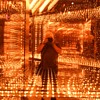Posted 11 years ago
 rniederman
rniederman
(346 items)
Well here we are in all of our resplendent pictorial glory and digital imaging goodness ... January 7, 2014 ... exactly 175 years after the first public announcement of the daguerreotype process on this day in 1839. While the invention of photography is an incremental collaboration of many, many people over a long period of time, Joseph Nicéphore Niépce (1765-1833) and Louis-Jacques-Mandé Daguerre (1787-1851) are among a select few who are considered fathers of photography.
In 1999 (the 160th anniversary), France issued a booklet of six stamps celebrating the works of great French photographers. This is a wonderful presentation that includes illustrations of Niepce and Daguerre. Profits went to the Red Cross.
I am especially happy with this set of stamps because it was an unexpected gift from a well known French camera collector after I sent him a block of our American “Masters of American Photography” stamps issued by the United States Postal Service in 2001.
A bit of history (a really small portion of the big picture) to appreciate how we got here for the curious among you ...
Niépce is credited with creating the first permanently fixed image from nature (c.1826) using a process he called heliography. Although there were many attempts before 1826 to produce a permanent image, Niépce’s landmark picture “View from the Window at Le Gras” is the world’s oldest surviving photograph and resides in the University of Texas at Austin. The image is also unique for using pewter as a base material and having an exposure of at least eight hours. (The photo of Niépce’s image included in this post was made by the J. Paul Getty Museum; source http://www.hrc.utexas.edu/exhibitions/permanent/firstphotograph)
But among the variety of attempted techniques, Daguerre’s approach of sensitizing silver on a copper plate (instead of pewter) was what finally brought photography into the public eye. It was first described in general terms to the French Academy of Sciences on January 7th by François Arago, Director of the Paris Observatory and permanent secretary of the academy. In his broadsheet of January 15, 1839, Daguerre made numerous important statements of which I’ve included two passages:
“Everyone, with the aid of the DAGUERREOTYPE, will make a view of his castle or country-house: people will form collections of all kinds, which will be the more precious because art cannot imitate their accuracy and perfection of details; besides, they are unalterable by light. Even portraits will be made, though the unsteadiness of the model presents, it is true, some difficulties [which need to be overcome] in order to succeed properly.”
“Note. On 15 January 1839, an Exhibition comprising 40-50 pictures proving the results of the DAGUERREOTYPE will be opened at the same time as a subscription, the conditions of will then be announced.”
A subscription was Daguerre’s manner of envisioning sales because he failed to sell his invention outright. His comment about a castle probably refers to those who could afford 1,000 francs for the subscription. As patron and champion of Daguerre, Arago later explained the process in step-by-step detail on August 19, 1839.
So as you hold on to your favorite film camera(s), cell phone, small point-and-shoot digicam, or some type of professional digital gear for all of those Instagram, Facebook, CW moments (etc), keep in mind that there was no automation ... photographers had to be self-taught chemists as well as artists.















Thanks, aghcollect!
Thanks, vetraio50!
Very interesting, they would marvelled at how far things have advanced!
Thanks, f64imager!
Thanks, Sean!
Thanks, Eric!
Thanks, David!
Thanks, Sean!
Your very welcome Rob!!
Thanks, Leah!
Thanks, petey!